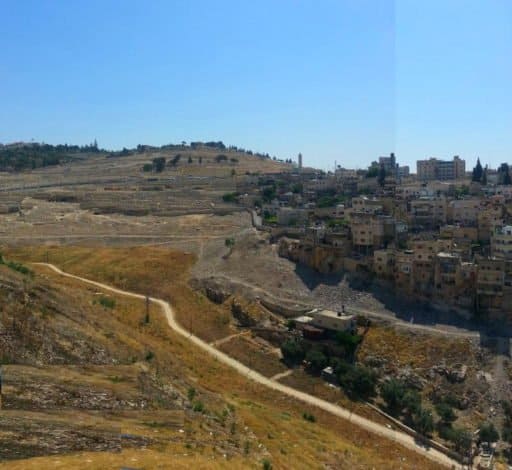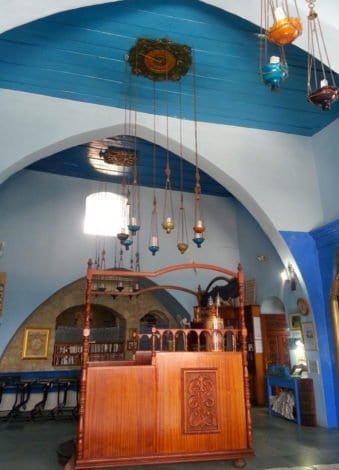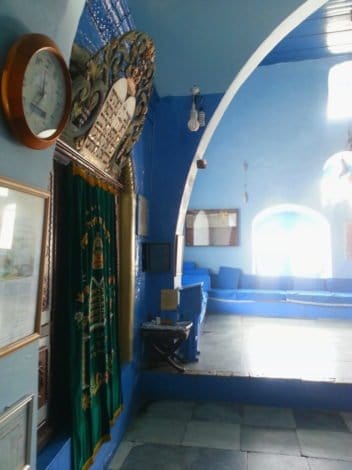Israel is not only about holy places; above it’s innovation, business and high-tech atmosphere, you will be surprised to know that there are dark tourism places for people who enjoy thrills.
The magic Road

During peaceful times, the road running downhill through the Jabel Mukaber Arab neighborhood was a destination for curious visitors who drove to a particular spot, put their cars into neutral, released the brakes, and then watched with amazement as their cars rolling uphill against gravity.
The road, known locally as the “magic” or “enchanted road,” is among several of Israel’s “gravity hills” — places where surrounding landscape produces an optical illusion.
The Cursed Building on Agrippa Street
A notorious building in Jerusalem called Eini House, rumors have it to be “cursed” – located in at 111 Agrippas Street. It’s well-known throughout the city that any business opening there will fail, doomed by a curse placed around 50 years ago by Rabbi Shalom Sharabi, a Rabbi in kabbala.
Legend has it that Sharabi was angered when the building rose to the height where it blocked out the rising sun, thus preventing him from saying his morning prayers on time. When the contractor refused to accommodate Sharabi’s (somewhat unreasonable) demand to cease the construction, he and his building fell victim to a curse.
Office spaces went unrented. Apartment units did not sell. One business after another that opened in Eini House lost money, went bankrupt or were forced to close.
Other buildings on the street are said to have been affected by the curse as well. Of course, there may be simpler explanations for these unsuccessful ventures – bad business decisions and bad locations, for instance.
The Ari Sefardi Synagogue
The Old City of Safed lies on the upper slope of a mountain. Below the city is the ancient cemetery where some of the most renowned Torah sages of all the ages are buried. The staircase leading out of the cemetery into the city brings one immediately to the Ari Sefardi Synagogue. This gigantic synagogue has a long history dating back over five hundred years. When Rabbi Yitzchak Luria, the Ari Zal, moved to Safed in 1570, the synagogue was already very old. He prayed there on an irregular basis, preferring to change his place for communion from one synagogue to another.
However, there was report of the stories of the Synagogue been haunted. The Rabbi heard it and said it’s impossible, because the demon cannot haunt a holy place.

The “bima” in the middle of the Ari synagogue, where the Torah scrolls are read

The Holy cabinet where the Torah scrolls are stored.
But the facts were real. Anyone who entered there did not leave alive. After a few mysterious deaths of this type, the beadle of the synagogue had locked and bolted it closed indefinitely.
In 1921, a famous rabbi named Rav Yisrael Abuchazera of Morocco, known as the Baba Sali, at that time was a thirty-year-old young man just arrived from Morocco, traveled with a personal attendant to the Holy Land. When he reached the Safed, he wanted to pray at the synagogue, but the gatekeeper refused to open the gate in fear of more death.
Baba Sali reacted angrily to the report of the haunted Ari Sefardi Synagogue, and wanted to see it for himself. But the facts were real. Anyone who entered there did not leave alive. After a few mysterious deaths of this type, the beadle of the synagogue had locked and bolted it closed indefinitely.
Rav Yisrael Abuchazera, fully aware of the danger which awaited anyone who dared to enter the synagogue, sent his personal aide straight away to the gatekeeper’s house to implore him to open the synagogue for him. In the meantime, Rabbi Yisrael walked down to the Ari mikve (ritual immersion pool) and immersed in the cold spring water pool.
The old gatekeeper flatly refused the aide’s request. “Don’t you know,” he told the young man sternly, “how many corpses lie inside? It is impossible to remove them.”
With a sad look in his eyes, he concluded, “I cannot give the key to you or to anyone else. I will not be a party to certain death.”
The Baba Sali’s personal attendant persisted to the gatekeeper and he finally gave in, went on to open the gate.
Before entering, the gatekeeper asked the Rabbi to tie a rope around his waist, so in case if he didn’t go out, people would be able to pull him out. However, the Rabbi refused.
The Baba Sali then took the key to the inner door some fifteen feet inside. As he stepped in, he told his aide to hold onto his coat and don’t let go, And don’t say a word.
When Baba Sali boldly stepped into the main synagogue, Suddenly a strange sight lay before them. The synagogue blazed full of light.
Then the Rabbi opened the Ark, took out a Torah scroll, and carried it to the bimah. The young aide followed him holding tightly to his master’s robe. There he opened the Torah scroll and read from it outloud. His voice echoed across the hall in all directions, mingling with the strange rays of light that filled the room.
When he finished, the Baba Sali closed the Torah scroll, and returned it to its place in the Holy Ark. Only then did he sit down.
“You may release your hold on my garment now,” he said. “The danger is over.”
Since then, there were no more death from the synagogue and the place was once again open to all.


